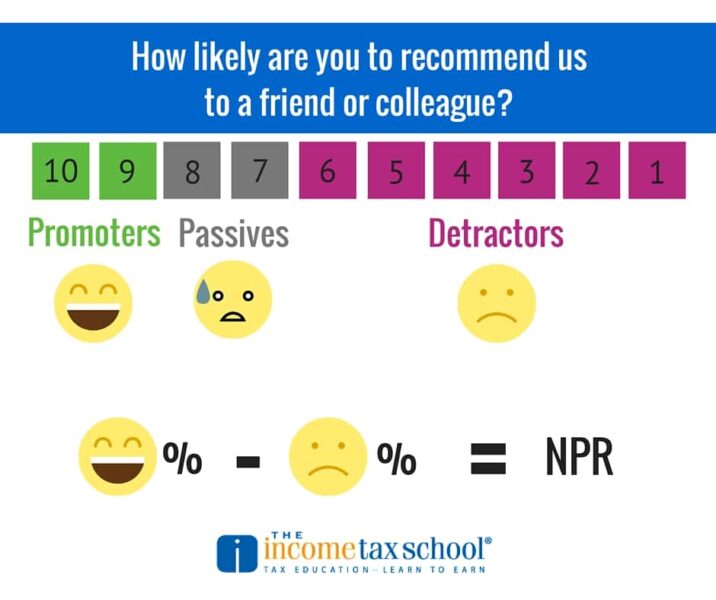As a business owner it’s important to track the growth of your company. You can look at revenue, you can look at customer growth, retention and attrition, etc. If you really want to know how your business is doing, or predict future growth, you’ve got to know how happy your customers are with the services you provide.
Enter your Net Promoter Score. Your Net Promoter Score (NPS) tells you the percentage of your clients who are satisfied with you and would recommend you to others. It measures the loyalty of your customers and acts as a metric that goes beyond a customer satisfaction rating.
In short … it tells you how much your customers love you.
How to calculate your Net Promoter Score
Your Net Promoter Score is calculated based on a single question: How likely are you to recommend our company/product/service to a friend or colleague?
Your customers are asked to respond using a 0-10 ranking scale. How they respond correlates to the type of promoter or loyal customer they are. NPS groups responses into three types of customers.
Promoters
Promoters are customers who respond with a 9 or 10 score. These are your most loyal customers – customers who continue to buy from you, refer their friends and family to you, and remain customers for longer. These behaviors are called “value-creating behaviors” according to the Net Promoter Score system.
Detractors
Detractors are customers who respond with a score of 0-6. These are your unhappy customers. They could be unhappy for various reasons — it’s your job to find out. These customers are less likely to exhibit “value-creating behaviors”.
Passives
Passives are customers who respond with a score of 7 or 8. They are passive and unenthusiastic about your company. Watch out, these types of customers could easily be wooed by the competition.
To calculate your score start with the total number of respondents and figure out the percentage of Promoters and percentage of Detractors (Passives only count toward the total number of respondents). Subtract the percentage of customers who are Detractors from the percentage of customers who are Promoters and you’ve got your Net Promoter Score.
Once you know your NPS, you will have a good gauge for how loyal your customers are and how effective your staff/services are in their eyes. This score helps you manage your customer relationships and can be an indicator of growth. The higher your score, the more customers you have who exhibit value-creating behaviors, and the more likely your company will be poised for growth.
Always ask why
Your Net Promoter Score is an important number to know but it means nothing if you don’t ask your customers why. Why did they respond negatively or positively? What do they love about you? What do they wish you would change? These are important follow-up questions to include.
You should always have your finger on the pulse of your customer relationships. The end of tax season is a great time to send these surveys out so you can see how you did and focus on what you need to work on for next season.

